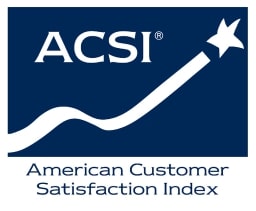E-Rate’s Local Impact Is Just Starting
Thanks to the Federal Communication Commission’s (FCC) Universal Service Fund and its E-rate program, communities in GVEC Internet’s service territory have an opportunity to upgrade outdated internet connections to high-speed GVEC Internet Fiber. In May 2018, Stockdale ISD’s E-rate Fiber upgrade went live, and in 2019, Moulton ISD signed GVEC Internet Internet’s second E-rate contract, which is scheduled to go live in January 2020.
What is E-rate? Where did it come from? Why is this program important to education in the Guadalupe Valley as we move deeper into the 21st century? And how does E-rate correspond with GVEC Internet’s overall commitment to service?
One Policy, One System, Universal Service
E-rate’s legacy and the philosophy of public good behind the program go back to the early 20th century. In 1907, Theodore Newton Vail, then president of American Telephone & Telegraph (AT&T’s original name), detailed a new operating policy for his telephone company that would prove revolutionary: “One Policy, One System, Universal Service.”
A Standard of Service For All
Vail’s vision of “universal service” lasted well beyond his lifetime and has transcended the telephone. From the last years of the 20th century to the present day, universal service has become the driving philosophy behind a push for widespread public access to cellphone and internet technology, too. More than a century after Vail’s “One Policy, One System, Universal Service” principle took shape, the FCC’s Universal Service Fund—which administers E-rate—continues the idea of a baseline level of affordable universal service for all Americans.
The Telecommunications Act Of 1996
The Telecommunications Act of 1996 required the FCC to create the Universal Service Fund. Before then, no formal fund for universal service existed. However, the U.S. government had long worked to ensure universal access to communications services for all Americans by requiring large long-distance companies to subsidize service to low-income communities and households.
The 1996 law made universal service an official FCC standard and created four programs administered through the Universal Service Fund:
Connect America – This program helps fund the buildout of broadband internet services to sparsely populated areas that are expensive to service and/or hard to reach.
Lifeline – Lifeline provides subsidies to low-income households to help pay for broadband services.
Rural Health Care Support – This program provides funding to eligible healthcare facilities for access to up-to-date telecommunications and broadband services.
E-rate– E-rate subsidizes high-speed broadband services to eligible inner-city and rural schools and libraries around the country. As we mentioned, one local school district—Stockdale—is already up and running with high-speed GVEC Internet Fiber through E-rate subsidies. Moulton ISD received E-rate approval earlier this year to upgrade to high-speed GVEC Internet Fiber.
A Capitalist In Service To The Common Good
Vail’s motives weren’t completely selfless, of course. Still, his belief that all Americans had a right to basic, affordable levels of service was groundbreaking in corporate America at the time, and the concept of universal service remains an important part of America’s communication landscape. Without it, the FCC’s Universal Service Fund and E-rate might never have been authorized.
Universal Service Is Part Of Our DNA
Our founders established the Guadalupe Electric Cooperative in 1938 to deliver a basic level of affordable electric service to homes in the Guadalupe Valley; that’s why E-rate fits perfectly with our commitment to serving our members and customers.
In the last few years, GVEC Internet Internet has begun partnering with local school districts to obtain E-rate contracts and upgrade those schools to high-speed GVEC Internet Fiber—which is based on the world’s fastest internet technology. We believe there are few, if any, more important pursuits than building a strong foundation for the education of our youth. That’s why we’ll continue striving in the years ahead to deliver the online tools necessary to help prepare local students for the future. To learn more about E-rate or to inquire about obtaining an E-rate contract for your district through GVEC Internet Internet, call 800-699-4832 or visit our E-rate page at gvec.org.

